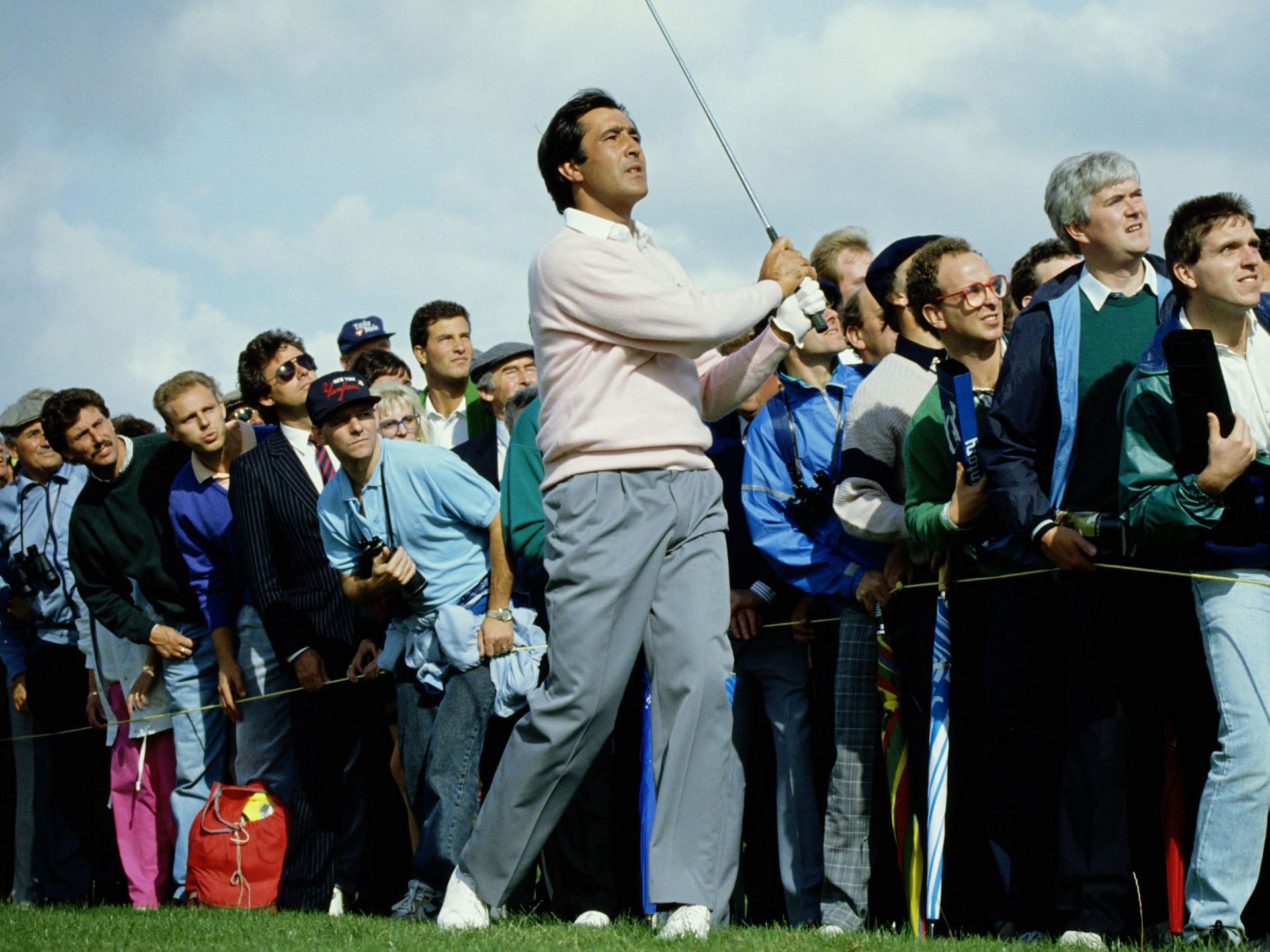
What is Seve Ballesteros’ Ryder Cup record? Exploring his past performances and more
Seve Ballesteros is one of the players who has had the most profound impact on world golf. His 90 professional victories, including nine on the PGA Tour (5 majors), make him one of the greatest winners of all time. But perhaps his greatest mark was made at the Ryder Cup.
In eight appearances, Ballesteros won an astounding 22.5 out of 37 possible points (60.81 percent). He was also part of the most iconic pair to ever play in the event.
Seve Ballesteros and his compatriot José María Olazabal played 15 matches against the Americans. They won 11 of them and tied two. They only lost twice.
Ballesteros made his debut in the 1979 edition and his beginnings were not very encouraging. He won only one match and lost four. This was a major setback for Europe, who lost 17 to 11.
His second Ryder Cup appearance was on a different level. In the 1983 edition at Palm Beach Garden, Florida, Seve Ballesteros scored three points in five matches, with two wins, one loss, and two draws.
However, the best was yet to come at The Belfry in Warwickshire, England. It was the 1985 edition and Europe would claim its first victory since the event had been extended to all European players six years earlier. Ballesteros would play a major role.
The Spaniard led the team with 3.5 points in five matches. Captain Tony Jacklin paired him with compatriot Manuel Piñeiro for the four-team matches. On day one, they defeated Curtis Strange and Mark O'Meara in the morning and Andrew North and Peter Jacobsen in the afternoon.
On Saturday, they lost early to O'Meara and Lanny Wadkins, but defeated Craig Stadler and Hal Sutton. Finally, Ballesteros tied his singles match with Tom Kite and Europe won 16.5 to 11.5.
Seve Ballesteros and José María Olazabal: Ryder Cup dynasty
The 1987 Ryder Cup is remembered for many reasons. At Muirfield, Europe repeated its victory of two years earlier at The Belfry, and Jack Nicklaus, as captain, suffered defeat on a course he had designed.
It also marked the beginning of the Ryder Cup journey of the historic pairing of Seve Ballesteros and José María Olazabal. They played four matches there, winning three and losing one (to Hal Sutton and Larry Mize).
Ballesteros won his singles match against Curtis Strange and contributed four points to the second consecutive European victory.
If what happened at Muirfield was historic, what happened two years later at The Belfry was legendary. With another fine performance from Seve Ballesteros, Europe secured the draw that allowed them to retain the trophy for the third year in a row.
Teamed with the now inseparable Olazabal, Ballesteros won three matches and drew one. Finally, he lost his singles match against Paul Azinger to finish with 3.5 points.
The story was not the same for Europe in 1991, but it was for Seve Ballesteros. Again, he played four matches with Olazabal, and again they won three and halved one. This time Ballesteros won his singles match against Wayne Levi to finish with 4.5 points, which was not enough to avoid a European defeat.
In 1993, the Ryder Cup returned to The Belfry, but the glory of the previous decade could not be repeated. Europe lost 13-15, and Seve Ballesteros was absent from one of the team matches for the first time since his Ryder Cup debut.
Always at Jose Maria Olazabal's side, Ballesteros played two foursomes and one four-ball, winning two and losing one. He was booked in the second round of foursomes, but lost his singles match against Jim Gallagher.
Ballesteros would go on to win another Ryder Cup with the European team at Oak Hill in 1995. He, however, had his worst performance since his debut, scoring only one point. He earned it in a foursome with David Gilford against Bradford Faxon and Peter Jacobsen.
Two years later, the five-time major champion would return to the Ryder Cup as captain. The event was played at Valderrama, some 500 miles from Seve's hometown.
Under his leadership, and with Colin Montgomery as the star of the show, Europe defeated the United States for the second year in a row, 14.5 to 13.5.
Seve Ballesteros died of a brain tumor on May 7, 2011. He received countless honors from the world of golf, both from institutions, personalities, and fans. The following year, the European team dedicated one of the most memorable Ryder Cup performances of all time, the 'Miracle of Medinah', to him.